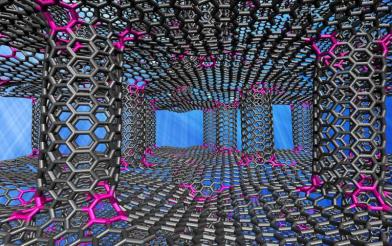Impressions from the 2018 Graphene Week in San Sebastian
The Graphene-Info team attended this year's Graphene Week, organized by the Graphene Flagship in San Sebastian, Spain, 10-14 September 2018. The event attracted over 600 visitors from all over the world, and was extremely well organized.
While the talks and lectures were clearly scientifically-oriented, the commercial angle was also evident and many institutes and companies were there to show their recent product advancements. The Graphene Flagship's booth held a fascinating array of exhibits: graphene-enhanced retina and neural prosthesis (biomedical devices) by the ICN2 as a part of Braincom, Airbus' graphene composite for the leading edge of the tail of the Airbus A350, Nokia, Ericsson and AMO's graphene-based modulators and photodetectors for optical communications, a prosthetic robotic hand enhanced with graphene nerve sensors by the IIT, University of Cambridge's insole graphene-based pressure sensor and more.



